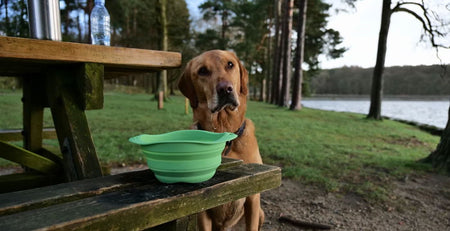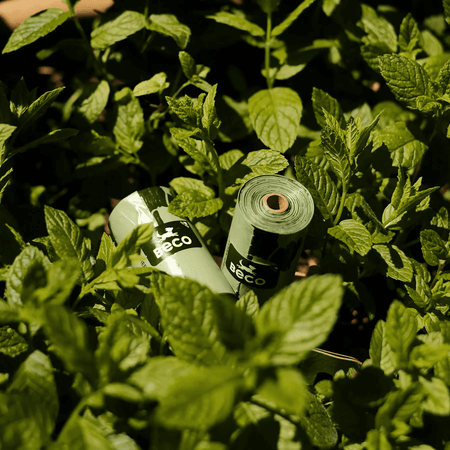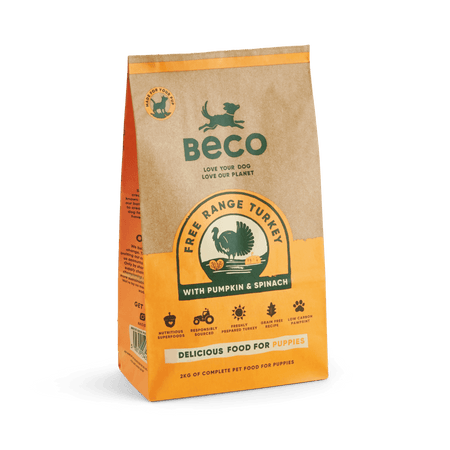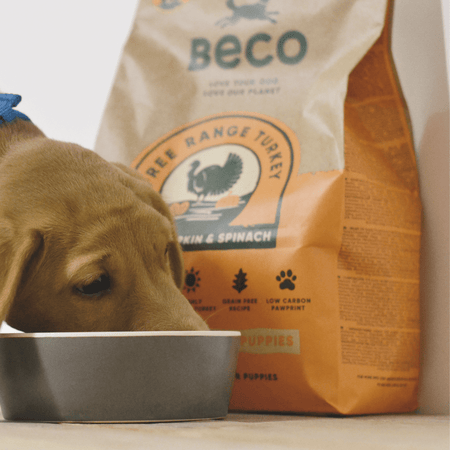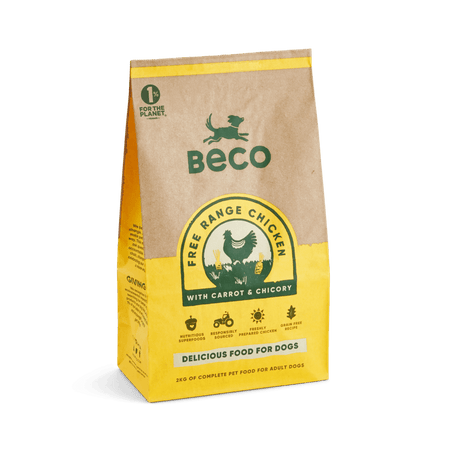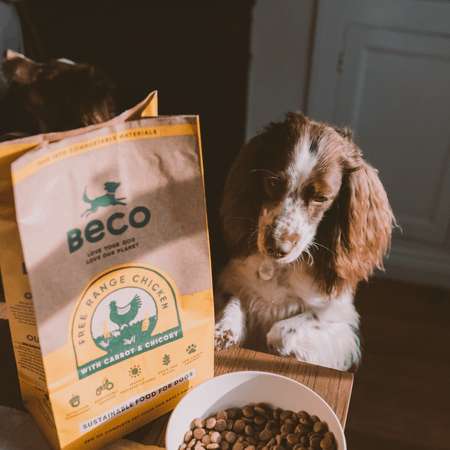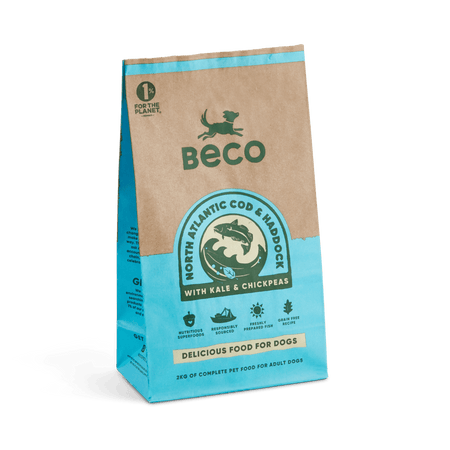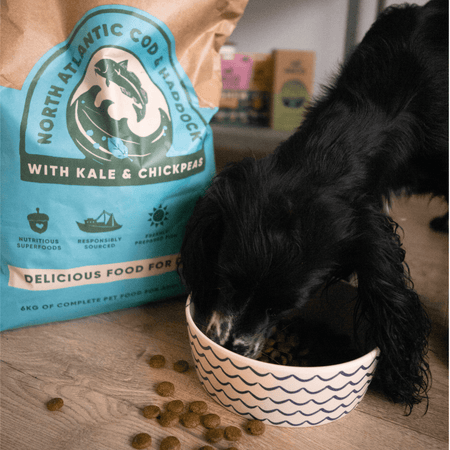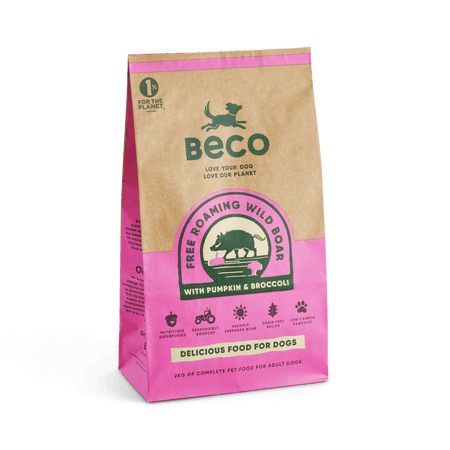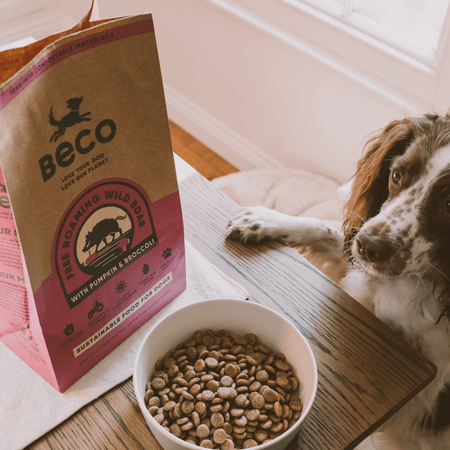Discovering the right approach to changing puppy food or changing dog food can be a daunting task, especially if your pooch has a delicate stomach. A smooth dietary transition can be achieved in around 10 days but learn more and ensure success with our comprehensive guide.
Key Summary
Dogs' nutritional needs vary across life stages and health conditions, which can require dietary transitions at certain milestones or in response to specific issues.
Transitioning to a new dog food requires a gradual process over several days to avoid upsetting your dog's digestive system.
Choosing the right dog food is also an important part of the transition and involves balancing proteins, fats, carbohydrates, fibre, vitamins and minerals, along with considering special dietary needs.
Close monitoring of a dog's response to a new diet is important to gauge its appropriateness, with adjustments made based on weight or body condition score (BCS).
Should You Change Your Puppy or Dog’s Food?
A dog's nutritional needs vary across different life stages and conditions. Puppies, adults, seniors, pregnant dogs or those with specific health issues all require unique dietary considerations.
When your playful puppy matures into an adult, it's time to transition from puppy food to adult food. This happens around the age of one for most breeds, although large breeds may take slightly longer. Similarly, as your energetic adult dog reaches their golden years, a transition to senior dog food can help address their changing needs.
In certain cases, a diet change might be necessary for health reasons. For example, a dog diagnosed with diabetes may need a low-glycemic diet to help manage blood sugar levels. Pregnant or nursing dogs may also require an alternate diet that is rich in certain nutrients to support both themselves and their growing puppies.
What to Look for in Your Dog’s Food?

Choosing the right dog or puppy food plays a crucial role in your pet's health. Key considerations include the right balance of protein, fat, carbohydrates, fibre, vitamins and minerals.
Specific diets, like grain-free diets, have shown considerable benefits for some dogs. A recent study discovered that dogs consuming a grain-free diet showed improvements in conditions like dilated cardiomyopathy (DCM). This same study found that dogs on a grain-rich diet had lower blood taurine levels, an amino acid essential for cardiac function, eye health and the immune system.
Your dog's breed, size, age, activity level and health status can all impact their nutritional needs. Large breed puppies, as an example, require a diet formulated to support controlled growth, while senior dogs may benefit from a diet with joint-supporting nutrients like glucosamine and chondroitin.
Here's a more detailed breakdown of what you should look for when changing a dog's food:
1. High-Quality Protein
Proteins serve as the building blocks for cells, tissues and organs and are vital for growth, maintenance and repair. Look for dog foods that list a source of animal-based protein, such as beef, as the first ingredient. These provide the full range of essential amino acids your dog requires.
2. Healthy Fats
Fats, found in sources such as chicken or flaxseed, provide the most concentrated source of energy in the diet. They supply essential fatty acids that cannot be synthesised in the body, such as linoleic and arachidonic acids. A healthy coat and skin are also maintained by fats.
3. Balanced Carbohydrates
Carbohydrates can offer a good energy source and provide necessary dietary fibre, however, it's essential to consider their source and digestibility. Whole grains, sweet potatoes and peas are often well-tolerated carbohydrate sources.
4. Fibre
Dietary fibre can promote a sense of fullness, slowing the rate at which sugar is absorbed into the bloodstream, and helping to maintain steady energy levels. It can also support digestive health. Look for food with sources of both soluble and insoluble fibre, like beet pulp.
5. Vitamins and Minerals
Vitamins and minerals play a vital role in various body functions; for example, calcium and phosphorus are important for bone health, while vitamins A and E have antioxidant properties. Consider foods fortified with essential vitamins and minerals.
Understanding Food Labels
In the UK, dog food labels provide critical information about the product's nutritional content and ingredients and it is important to understand how to decipher these so that you can make the best dietary choices for your pet.
The main ingredients in the dog food are listed in descending order of weight meaning the first few ingredients usually make up a significant portion of the product. It's essential to look for a named source of protein, for example chicken, as one of the top ingredients.
𝐢 Be mindful of vague terms like "meat and animal derivatives" or "cereals," as they do not specify the exact source and may indicate lower quality ingredients.
Secondly, pay close attention to the 'Analytical Constituents' section of the label as this part will indicate the levels of key nutrients, such as protein and fat, and will help you know if it meets your pup’s dietary needs.
The label should also detail any nutritional additives, such as vitamins and minerals. Keep an eye out for other permitted additives, for example, artificial colours, preservatives or flavourings as these are best avoided.
How to Change Your Puppy or Dog’s Food | Step-by-Step Guide
Transitioning your dog's diet requires a measured, methodical approach. A sudden diet change can lead to gastrointestinal upset. Here’s a step-by-step guide to making the change as easy as possible for your dog:
Days 1-3: Mix 75% of the old food with 25% of the new food. This slow introduction helps your dog get used to the new food in his system.
Days 4-6: Transition to a 50-50 mix of old and new food. Monitor your dog closely for any signs of stomach upset or changes in behaviour.
Days 7-9: Move to a mix of 25% old food and 75% new food.
Day 10 onwards: You can now feed your dog 100% new food.
Transitioning puppies to a new diet might need a more gradual approach, especially when transitioning from mother's milk to solid food. Additionally, if your dog has a sensitive stomach, this transition period might need to be extended.
Key Summary | Transitioning Your Dog’s Diet
| Days | Old Food | New Food |
|---|---|---|
| 1-3 | 75% | 25% |
| 4-6 | 50% | 50% |
| 7-9 | 25% | 75% |
| 10+ | 0% | 100% |
For more sensitive dogs, extend each phase by a few more days to ensure a gentler transition
Monitoring Your Dog on Their New Food
Observing your dog's response to their new diet is vital. Adjustments may be required based on your dog's weight or body condition score (BCS).
Signs Your Dog is on the Right Diet
- Shiny coat
- Bright, clear eyes
- Normal stools
- Regular appetite
- Good energy levels
- Healthy weight
- Good dental health
Signs Your Dog isn’t on the Right Diet
- Dull coat
- Lethargy
- Diarrhoea or loose stools
- Excessive flatulence
- Changes in appetite
- Weight gain or loss
What to Avoid When Transitioning Your Dog’s Diet
As you can already see, transitioning your dog’s diet requires a degree of strategic planning as abrupt or sudden changes can lead to uncomfortable side effects for your pet.
Remember – Quality. Quality. Quality.
An essential aspect to keep in mind when transitioning your dog’s diet is the quality and type of ingredients in the new dog food. Foods that contain artificial colours, flavours, or preservatives might cause allergic reactions or food intolerances in some dogs and therefore, it is advised to opt for dog food with natural ingredients and free from artificial additives.
High-Protein Diets Have their Caveats
It's also worth noting that while high-protein diets are beneficial for many dogs, excessive protein can lead to health issues in some cases, particularly in certain breeds and older dogs. These dogs may not metabolise protein as efficiently, leading to potential kidney damage and, as such, it's important to ensure that the new diet aligns with your dog’s specific health needs and conditions.
Keep it Nutritionally Balanced
If you are considering switching to a homemade or raw diet, it's important to ensure these meals are nutritionally balanced. These diets can sometimes lack essential nutrients or have imbalanced nutrient ratios, leading to long-term health problems. Consultation with a vet or a pet nutritionist is advised to ensure your homemade diet meets all your dog's nutritional requirements.
Be Mindful of Other Circumstances
Lastly, keep in mind that transitioning your dog's diet may not always be the best decision in certain circumstances. For example, if your dog has a chronic disease like pancreatitis or inflammatory bowel disease, changing their diet could potentially exacerbate their condition. Always consult with your vet before making significant changes to your dog’s diet, especially if they have a health condition.
Frequently Asked Questions (FAQs)
Can a Puppy Eat Adult Dog Food?
Puppies require more protein and certain nutrients than adult dogs, so they should ideally be fed a diet specifically formulated for their developmental needs. We wouldn’t recommend a puppy eating adult food before they are at the appropriate age unless recommended by a vet.
Why is My Puppy's Poop Soft After Changing Food?
A sudden diet change can cause digestive upset, including soft stools or diarrhoea. If the condition persists, consult your vet.
Conclusion
Changing a puppy’s food or changing dog food is a process that requires understanding, patience and careful observation.
Gradually transition your pet's diet over a period of around 10 days, or longer if they have a sensitive stomach, monitor them closely for signs of well-being or distress, and always consult with your vet if you have concerns or questions.
Remember, every dog is unique, and finding the right diet for your furry friend ensures they enjoy a healthy, happy life.


